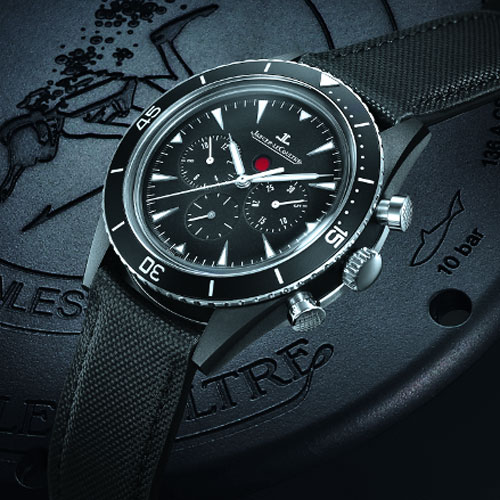Brief Introduction to Chronographs
Chronographs are more than just timepieces, they are marvels of engineering that have found their place in our day-to-day lives. These intricate devices have been perfected over centuries, offering not just the ability to keep time but also to measure it in various ways.
Importance of Understanding Chronograph Functionality
To answer the question at hand succinctly, yes, you can run a chronograph all the time. However, the impact of doing so varies depending on the type of chronograph and its mechanism, which we’ll delve into in this article.
A Comprehensive Exploration
Prepare to embark on a journey through the fascinating world of chronographs. From understanding their intricate mechanisms to debunking common myths, we promise an enlightening exploration.

Credit: www.watchtime.com
Understanding Chronographs
Definition and Mechanism
A chronograph is a specific type of watch that combines the functions of a display watch and a stopwatch. The term “chronograph” comes from the Greek words for “time” and “writing”. Although no physical writing happens, the watch does “write” or record time.
History and Evolution
Chronographs were first developed in the early 19th century for tracking astronomical objects. Over the years, they have evolved into multi-functional tools used in various sectors like aviation, racing, and diving.
Different Types of Chronographs
There are several types of chronographs, including digital, analog, and hybrid (ana-digi), each having its unique characteristics and mechanism.
How Does a Chronograph Work?
Anatomy of a Chronograph Watch
A chronograph watch typically has an hour hand, a minute hand, and a second hand for the main timekeeping. It also has two or three sub-dials for stopwatch functions.
Basic Operation and Features
The stopwatch function can be started, stopped, and returned to zero by successive presses on the pusher. Some chronographs offer additional features like a tachymeter for calculating speed.
Special Chronograph Complications
High-end chronographs may have complications such as a flyback function (which allows the stopwatch to be reset without stopping) or a split-second (rattrapante) feature, which allows simultaneous measurement of two events.
Can You Run a Chronograph All the Time?
Expert Opinions
Most watch experts agree that mechanical chronographs can be left running without causing damage to the watch. However, this may lead to more frequent servicing.
Impact on Watch Mechanism
While running a chronograph continuously doesn’t directly harm the mechanism, it does put additional stress on the components, potentially leading to increased wear and tear.
Effects on Battery Life (for Quartz Chronographs)
For quartz chronographs, running the stopwatch function continuously will significantly reduce the battery life. It’s generally recommended to stop the chronograph when not in use.
Pros and Cons of Running a Chronograph Continuously
Benefits of Continuous Chronograph Use
Running a chronograph continuously can be beneficial if you regularly use the stopwatch function. It can also add a dynamic element to your watch’s aesthetics, with the constant movement of the chronograph second hand.
Potential Drawbacks
The main drawbacks are increased wear and tear in mechanical chronographs and reduced battery life in quartz chronographs.
Maintenance Tips for Chronographs
Regular Servicing
Regular servicing can keep your chronograph in top condition, even if you decide to keep it running continuously.
Protection and Cleaning
Keeping the watch clean and protecting it from shocks and extreme temperatures
Best Practices for Chronograph Use
It’s essential to understand the best practices for using your chronograph, such as not resetting the stopwatch function while it’s still running, as this can damage the mechanism.
Common Myths About Chronograph Use
Debunking Misconceptions
One common myth is that running a chronograph continuously can damage the mechanism. As we’ve seen, this is not true, though it can lead to increased wear and tear.
Truths About Chronograph Operation
On the other hand, it is true that running a quartz chronograph continuously can significantly reduce battery life. This is a factor to consider when deciding whether or not to keep your chronograph running.
FAQs
Is it bad to leave a chronograph running?
For mechanical chronographs, it’s not inherently harmful, but it can increase wear and tear. For quartz chronographs, it can significantly reduce battery life.
Does a chronograph use more battery?
Yes, a quartz chronograph uses more battery when the stopwatch function is running, as it requires additional power to drive the sub-dials.
What is the purpose of a chronograph?
The primary function of a chronograph is to measure elapsed time, much like a stopwatch. They are widely used in various fields such as athletics, aviation, and submarine maneuvering, among others.
Conclusion
Recap of Key Points
Running a chronograph continuously is a choice that depends largely on the type of watch and the user’s preferences. While there’s no significant harm in doing so, it’s important to be aware of the potential for increased wear and tear in mechanical watches and reduced battery life in quartz models.
Final Thoughts on Continuous Chronograph Use
Watches are often seen as a testament to human ingenuity and craftsmanship. Chronographs, with their added complexity, epitomize this. Whether or not you choose to run your chronograph all the time, knowing the implications of that choice enables you to appreciate this marvelous piece of engineering even more.